Meath Industrial School for Protestant Boys, Blackrock, Dublin, Republic of Ireland
The Meath Industrial School for Protestant Boys was founded in 1871 by the Earl of Meath and other benevolent persons. It initially occupied a property known as Elm Cliff (or Elmcliffe), large house with a small quantity of land attached on Rock Hill, close to Blackrock station. As the lease of the property had only a few years to run, the managers proposed to find a site on which to erect a permanent building and were raising funds to that end.
The School was certified to begin operation on 5 May 1871. An inspection in the same year recorded twelve boys in residence. They received a 'good sound scriptural education' and were taught singing the manager, Mr Wilson. Industrial training included shoe-making and tailoring. The boys made shoes for themselves, for the institutions at Bray and Heytesbury Street, Dublin, as well as some for the public. The boys performed all the household duties of the establishment, and made and repaired their own clothing. Arrangements were made with the managers of the Industrial Training Ship Gibraltar at Belfast for boys having and aptitude for a seafaring life to be transferred to the ship.
In February 1874, the death occurred of the manager, Mr Wilson. He was succeeded by Mr James Treanor, but he proved to have insufficient experience and was replaced by Mr John Hatton, whose wife acted as matron.
With the Elm Cliff lease due to expire at the end of 1876, an agreement was made with the Earl of Pembroke for three acres of land on the Merrion road, close to Sydney Parade Station, on which the new school would be erected at an estimated cost of £3,000. This scheme appears not to have come to fruition and instead a ten-acre site on Carysfort Avenue, Blackrock, was acquired for the purpose. Purchase of the land and erection of the building, which was constructed in granite, amounted to around £6,000, a sum which was to leave the School in debt for many years that followed. In April 1877, the boys were transferred to the new premises, whose capacity was 100 places. Building work continued over the following four years with additions including workshops, laundry, dairy, cow-house and stable. Initially, Mr and Mrs Hatton continued as master and matron but by 1878 had been succeeded by Mr and Mrs Vanston. The other staff comprised the assistant master and drill sergeant, Mr Ginkle (or Ginghill), plus a tailor and shoemaker.
The School site is shown on the 1909 map below.
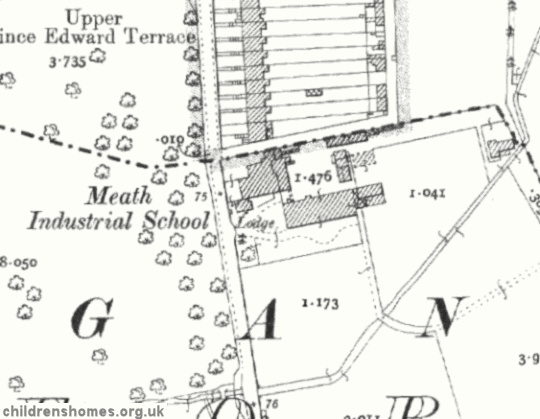
Meath Industrial School for Boys site, Blackrock, c.1909.
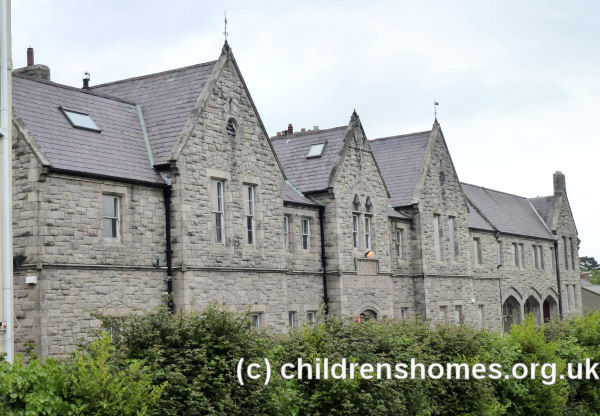
Former Meath Industrial School for Boys from the south-west, Blackrock, 2014. © Peter Higginbotham
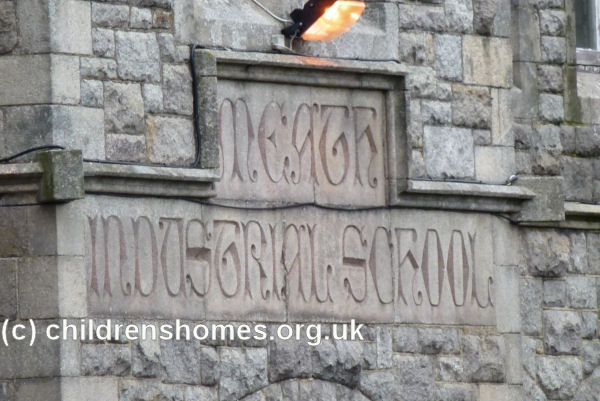
Former Meath Industrial School for Boys, Blackrock, 2014. © Peter Higginbotham
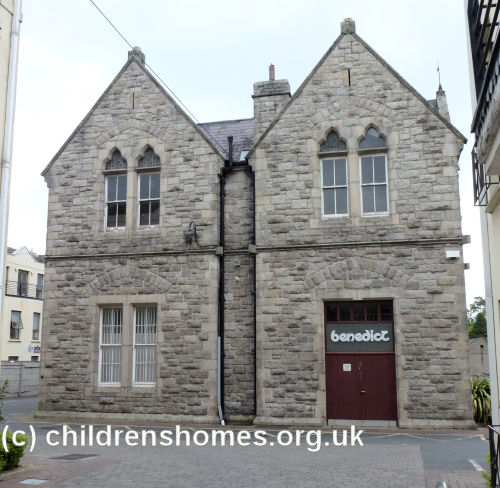
Former Meath Industrial School for Boys from the west, Blackrock, 2014. © Peter Higginbotham
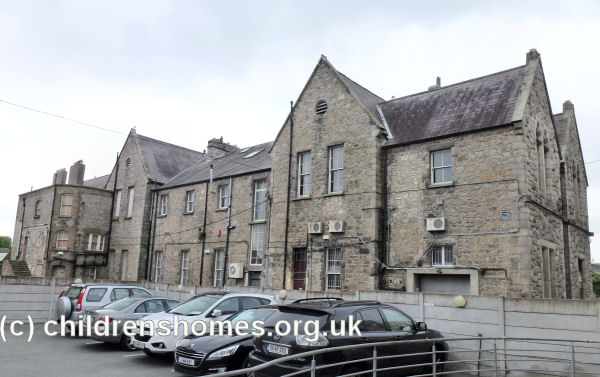
Former Meath Industrial School for Boys from the north-west, Blackrock, 2014. © Peter Higginbotham
An inspection in 1878 noted that the average number of inmates was 53. Beading, writing, spelling, dictation, arithmetic, and geography were taught. The boys cultivated the farm garden belonging to the premises, and carried out all the household duties of the establishment. They had re-made and re-covered all the mattresses of the School, did the laundry work, and were instructed in shoemaking and tailoring in the workshops.
Following the death of Mr Ginkle in 1881, two assistant masters were appointed in his place, one having charge of the school teaching and the other, Mr Johnston, acted as drill-master and band-master for the School's brass band.
Following and outbreak of scarlatina in November 1883, an isolation infirmary was erected in the grounds of the institution. In the same year, a carpentry workshop was fitted up.
In 1885, following the closure of the Kerry Home Industrial Schoolfor Protestant Boys, Tralee, the capacity of the Meath School was raised to 126 places. It was further increased to 150 places in December 1902.
An inspection in 1911 recorded 113 committed inmates, 4 voluntary inmates, and two boys out on licence. It was noted that the School had a cemented playground and a large field for games. A set of gymnastic apparatus had been presented by Mr Geoghegan. In the classroom, Singing and geography were rated as 'good., composition and recitation as 'very good', and mental arithmetic as 'very fair'. Lessons on agriculture and elementary science were given to boys over 13 years of age. Industrial training now included drawing and manual instruction. There were 16 tailors, 15 shoemakers, 8 carpenters, 2 painters and 25 agriculturists. The School band had 30 members. Of the 38 boys discharged during the year, 35 went to skilled or progressive employment. The boys have daily physical drill and a good gymnasium. The playing field was in constant use for football and cricket. The boys had their usual month in camp during the summer. The staff comprised the manager and matron, Mr and Mrs J.R. Beeby, assisted by head schoolmaster, assistant master, band and drill master, tailor, shoemaker, carpenter, gardener, cook, sewing mistress, and laundress.
In March 1917, the boys were transferred to the Balmoral Industrial School, Belfast, when the premises were taken over for use as a military orthopaedic hospital. The School never re-opened and the building now forms part of a business park.
Records
Note: many repositories impose a closure period of up to 100 years for records identifying individuals. Before travelling a long distance, always check that the records you want to consult will be available.
- None identfied at present — any information welcome.
Bibliography
- Higginbotham, Peter Children's Homes: A History of Institutional Care for Britain's Young (2017, Pen & Sword)
- Mahood, Linda Policing Gender, Class and Family: Britain, 1850-1940 (1995, Univeristy of Alberta Press)
- Prahms, Wendy Newcastle Ragged and Industrial School (2006, The History Press)
Links
- Glencree Reconciliation Centre (former Reformatory site)
- The Commission to Inquire into Child Abuse
Except where indicated, this page () © Peter Higginbotham. Contents may not be reproduced without permission.


